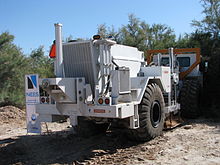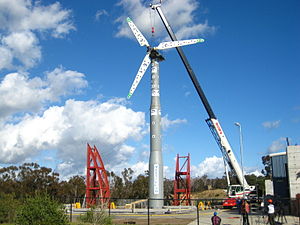- Network for Earthquake Engineering Simulation
-
The George E. Brown, Jr. Network for Earthquake Engineering Simulation (NEES) was created by the National Science Foundation (NSF) to improve infrastructure design and construction practices to prevent or minimize damage during an earthquake or tsunami. Its headquarters are based at Purdue University in West Lafayette, Indiana as part of cooperative agreement #CMMI-0927178. The mission of NEES is to accelerate improvements in seismic design and performance by serving as a collaboratory for discovery and innovation.
The NEES network features 14 geographically distributed, shared-use laboratories that support several types of experimental work: geotechnical centrifuge research, shake table tests, large-scale structural testing, tsunami wave basin experiments, and field site research. Participating universities include: Cornell University; Lehigh University; Oregon State University; Rensselaer Polytechnic Institute; University at Buffalo, SUNY; University of California, Berkeley; University of California, Davis; University of California, Los Angeles; University of California, San Diego; University of California, Santa Barbara; University of Illinois, Urbana-Champaign; University of Minnesota; University of Nevada, Reno; and the University of Texas, Austin.
The equipment sites (labs) and a central data repository are connected to the global earthquake engineering community via the NEEShub, which is powered by the HUBzero software developed at Purdue University specifically to help the scientific community share resources and collaborate. The cyberinfrastructure, connected via Internet2, provides interactive simulation tools, a simulation tool development area, a curated central data repository, animated presentations, user support, telepresence, mechanism for uploading and sharing resources and statistics about users, and usage patterns.
This cyberinfrastructure allows researchers to: securely store, organize and share data within a standardized framework in a central location; remotely observe and participate in experiments through the use of synchronized real-time data and video; collaborate with colleagues to facilitate the planning, performance, analysis, and publication of research experiments; and conduct computational and hybrid simulations that may combine the results of multiple distributed experiments and link physical experiments with computer simulations to enable the investigation of overall system performance.
These resources jointly provide the means for collaboration and discovery to improve the seismic design and performance of civil and mechanical infrastructure systems.
What is Cyberinfrastructure?
Cyberinfrastructure is an infrastructure based on computer networks and application-specific software, tools, and data repositories that support research in a particular discipline. The term "cyberinfrastructure" was coined by the National Science Foundation to answer the question: how can NSF, as the nation's premier agency funding basic research, remove existing barriers to the rapid evolution of high performance computing, making it truly usable by all the nation's scientists and engineers?
External links
Wikimedia Foundation. 2010.


